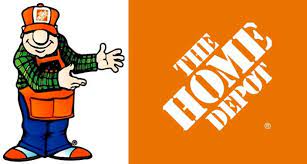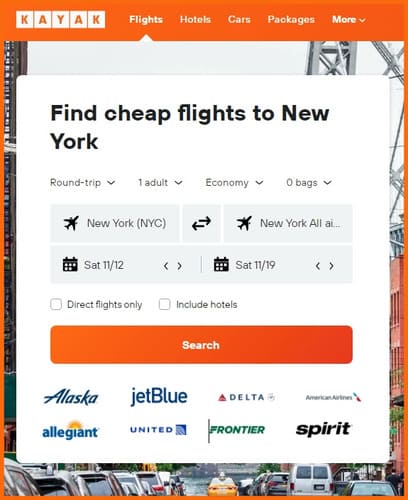Wilmington & Western Railroad
The Wilmington & Western Railroad was chartered in 1867 to move goods from the mills along the Red Clay Creek to the Port of Wilmington, and officially opened for freight and passenger service on October 19, 1872. Three passenger trains and a mixed freight train operated six days a week on nearly 20 miles of track between downtown Wilmington, DE, and Landenberg, PA. Much of the line ran through the Red Clay Valley, bustling in the late 19th Century with farms, small villages and water-powered mills.
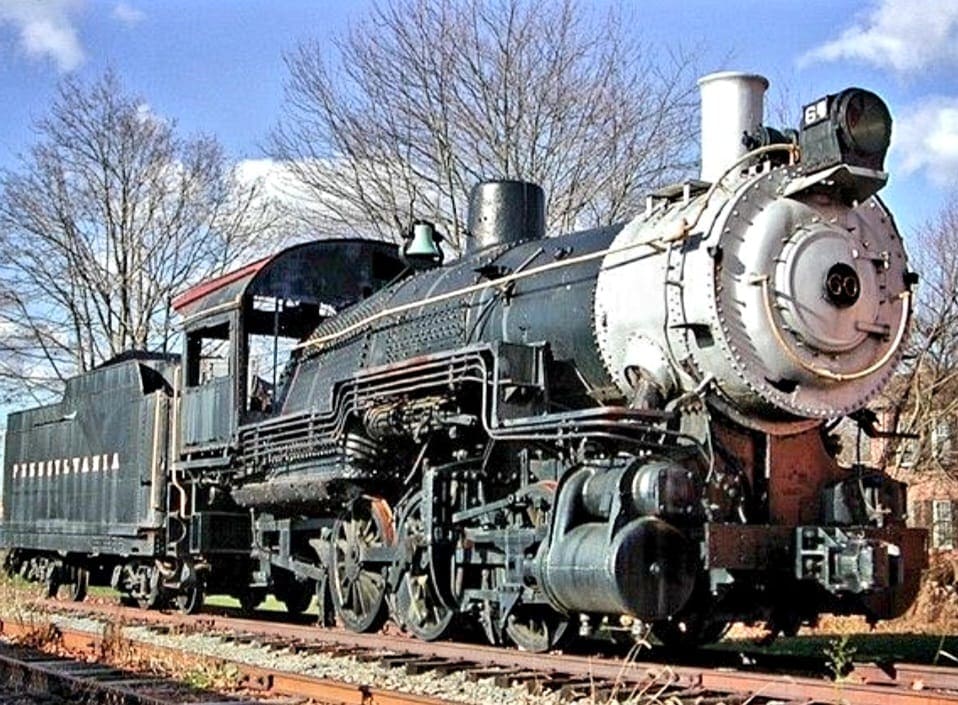
Excessive construction debts and poor management caused the line to fall into foreclosure in 1877, just a few years after opening. New owners reorganized the line as the Delaware Western Railroad, which became highly profitable moving kaolin clay, vulcanized fiber materials, snuff, iron and coal to and from the many mills that lined the route.
In the 1880s, the line was purchased by the Baltimore & Philadelphia Railroad (B&P), a subsidiary of the Baltimore & Ohio (B&O). Purchase of the line by the B&P provided the Baltimore & Ohio with an access route to compete with the Pennsylvania Railroad for passengers and freight traveling between Washington, Baltimore, Philadelphia and New York City. The line became known as the “Landenberg Branch” by the B&O and was, for a time, its most profitable branch line.
When a resort opened along the railroad in the late 1880s at Brandywine Springs, the passenger business flourished as people from around the region came to the park to escape the summer heat. They came to enjoy the fun house, pony rides, carousel and live entertainment. The park closed in 1923, and the passenger business ended on September 28, 1930, a victim of the Great Depression. Shortly thereafter, the Pennsylvania Railroad discontinued its connecting service to Landenberg. With trucks and automobiles gaining in popularity, the Landenberg Branch saw a sharp decrease in freight traffic, and the line was first shortened to Southwood, DE, in the early 1940s, and shortened again to Hockessin, DE, in the late 1950s.
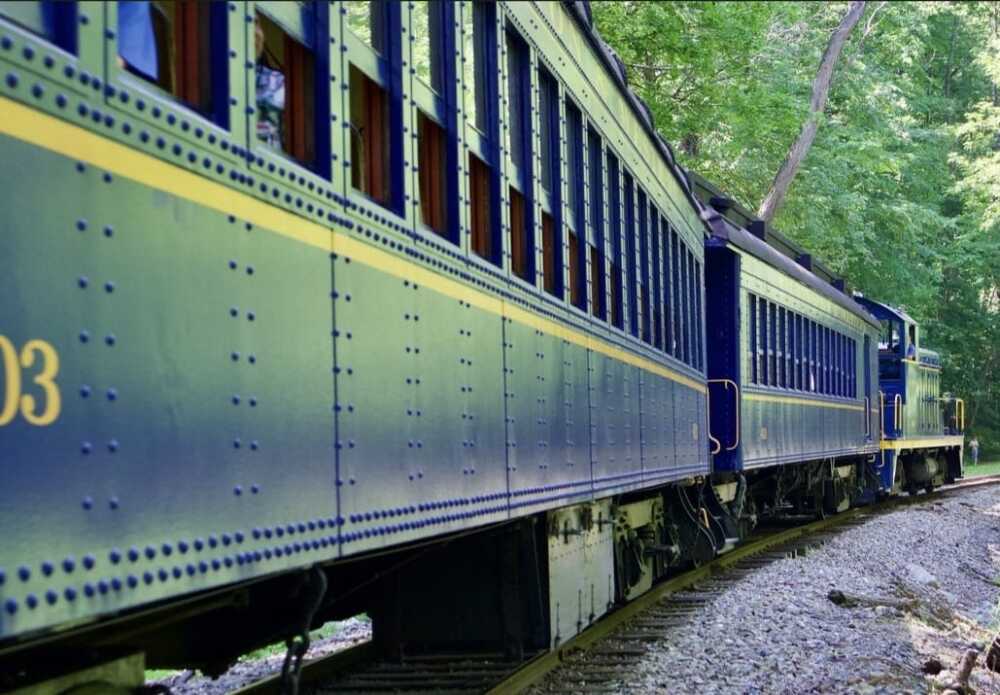
Wilmington & Western Railroad 1960s
In the mid-1960s, Historic Red Clay Valley Inc. (HRCV) was formed and began leasing the tracks from the B&O on weekends beginning in 1966, operating steam-powered tourist trains between Greenbank Station and Mt. Cuba, located mid-way between Greenbank and Hockessin. In the mid-1970s, the line’s new owner, The Chessie System, determined that the line had become a financial burden and filed for abandonment of the line – fundraising by HRCV began immediately. In August of 1982, the remaining 10.2 miles of the Landenberg Branch were purchased by HRCV.
For three days in September of 1999, Hurricane Floyd pounded the East Coast, destroying two of the wooden bridges spanning the Red Clay Creek, damaging 11 others and causing numerous washouts along the line. A year later, volunteers and contractors had repaired most of the line between Greenbank and Hockessin, and on November 25, 2000, the first revenue train made its way west to Mt. Cuba. The Wilmington & Western had overcome a major natural disaster in just 18 months, but the railroad would soon discover that Mother Nature had more in store.
Wilmington & Western Railroad Today
On September 15, 2003 (one day short of the fourth anniversary of Hurricane Floyd), the remnants of Tropical Storm Henri stalled over southern Chester County in Pennsylvania and produced record amounts of water in the Red Clay Creek. The rushing waters tore through the Red Clay Valley, destroyed six of the historic bridges, and reduced the railroad from 10 miles to two. We persevered (and continued to operate on the remaining section of track) while we rebuilt the bridges to withstand future flooding. As each bridge was rebuilt, the revenue trains went further and further up the line, and we also used the seldom-seen portion of our line between Greenbank and the CSX Interchange at Centreville Road.
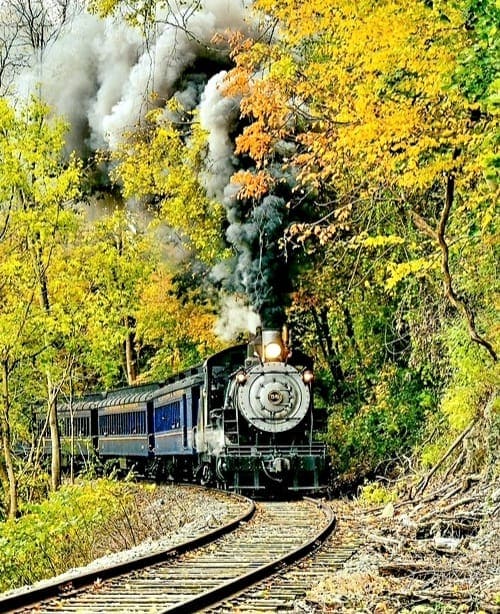
Wilmington & Western Railroad railroad continues to operate regular steam- and diesel-powered tourist trains on the full 10 miles of track between Greenbank and Hockessin. the operating season kicks off in the Spring, and runs through December 30, with trains departing nearly every weekend. In recent years, the railroad has become a popular site for weddings, birthdays, family reunions and a variety of other events, and chartered trains are available year-round. the Board of Directors, staff and volunteers contribute countless hours of work each year into making the railroad the successful enterprise it is today, and they do it so that future generations will have a living awareness of the history, industry and beauty of the Red Clay Valley.
The Route You’ll Travel
The Wilmington & Western Railroad’s 10-miles of track wind through some of the prettiest scenery in the tri-state area. Just a few miles west of I-95 is a tranquil and historic area that is best seen from the comfort of a train.
GREENBANK
Upon leaving Greenbank Station, the train crosses the Red Clay Creek for the first time and passes Greenbank Mills & Philips Farm, the only surviving mill along the route. There were dozens of mills along the tracks in the late 1800s, and the Wilmington & Western was built to move goods between the mills and the Port of Wilmington. In 1852, the son of one of the mill’s owners built a mansion overlooking the mill. He named the mansion “Greenbank,” and the name of the mansion eventually became the name of the community.
Shortly after passing the mill, the train rolls through Brandywine Springs Park, the site of an amusement park in the late 1800s and early 1900s. Brandywine Springs once featured a fun house, pony rides, dance hall, lake, bandstand and various other amusements, and many people came to the park on the Wilmington & Western. The amusements closed forever in 1923 and today, Brandywine Springs is a New Castle County Park – only the stone foundations remain of the park’s amusements. The Friends of Brandywine Springs perform monthly archaeological digs in the park to uncover the history of what was once a popular summer destination for local residents.
FAULKLAND
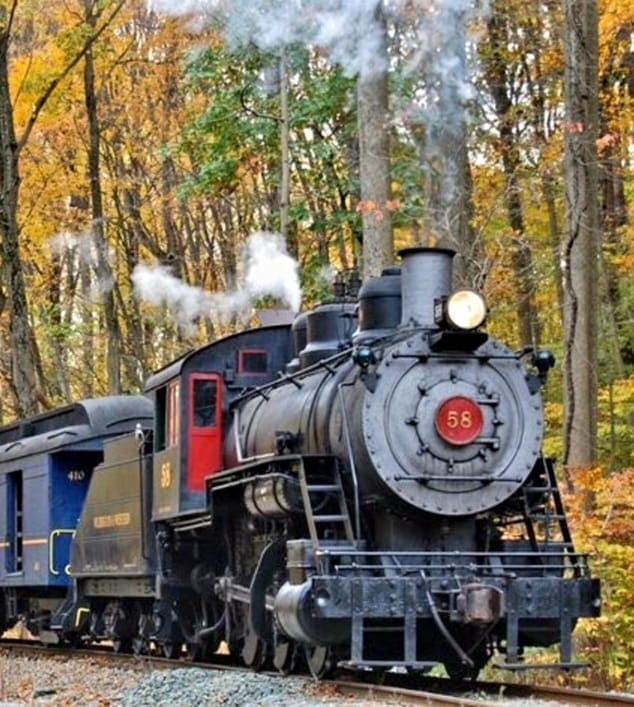
After crossing the creek again, the train enters the community of Faulkland. An inventor named Oliver Evans built a grist mill here, and Evans revolutionized the milling industry by inventing a series of machines to reduce the amount of labor needed in the physically demanding milling process.
In Faulkland, the tracks run through the back yards of many homes in the Brookmeade II and Brookmeade III housing developments, and the residents will often come out to wave to the train as we roll by.
After passing Brookmeade, we come alongside the old Hercules Research Center. After the government ended the DuPont Company’s gunpowder monopoly, the Hercules Company was formed to continue gunpowder production. Hercules used this facility for research and development, but the property was sold in 2008 to other interests.
WOODDALE
The train crosses Lancaster Pike (Delaware Route 48) and enters Wooddale, another small community which once had a post office, church, school, general store, hotel and a train station. The town was named after Alan Wood, the owner of the large Delaware Rolling Mills complex which once stood here. The mills are notable for having produced all of the shovels used in digging the Chesapeake and Delaware Canal.
Wooddale has three of the most scenic features of the railroad. First, the train passes through the Wooddale Rock Cut (a tunnel without a roof), where rock walls come within five feet of the train on each side! Next, we pass the Wooddale Covered Bridge, one of three such bridges in the state. The bridge allows Wooddale residents to cross the Red Clay Creek to get to their homes. Finally, the train passes the old Wooddale Quarry. The 175-foot quarry wall is visible from the train. There are large homes built into the quarry floor and throughout this area.
Samsung Store: Galaxy Z Fold4

Just beyond Wooddale, the wooded forests give way to open fields at Barley Mill. For most of the trip, the train twists and turns as it follows the Red Clay Creek, but here, the train runs along the straightest section of track on the railroad for a distance of a half-mile.
MT. CUBA PICNIC GROVE
After crossing Mt. Cuba Road, the train enters the community of Mt. Cuba, which is home to the Mt. Cuba Observatory and the Mt. Cuba Center, a 650-acre wooded oasis dedicated to the conservation of plants native to the Appalachian Piedmont. Although the observatory is not visible from the train, much of the land on either side of the tracks here is owned by the Mt. Cuba Center.
We cross the Red Clay Creek again and enter the Mt. Cuba Picnic Grove. The grove is located on the banks of the Red Clay, and on all Yorklyn Limited excursions, you can de-train here for a half-hour to stretch your legs, have a picnic lunch or admire the natural surroundings. For those who don’t want to layover at the grove, you can stay on board and the train will continue another few miles to Ashland and Yorklyn.
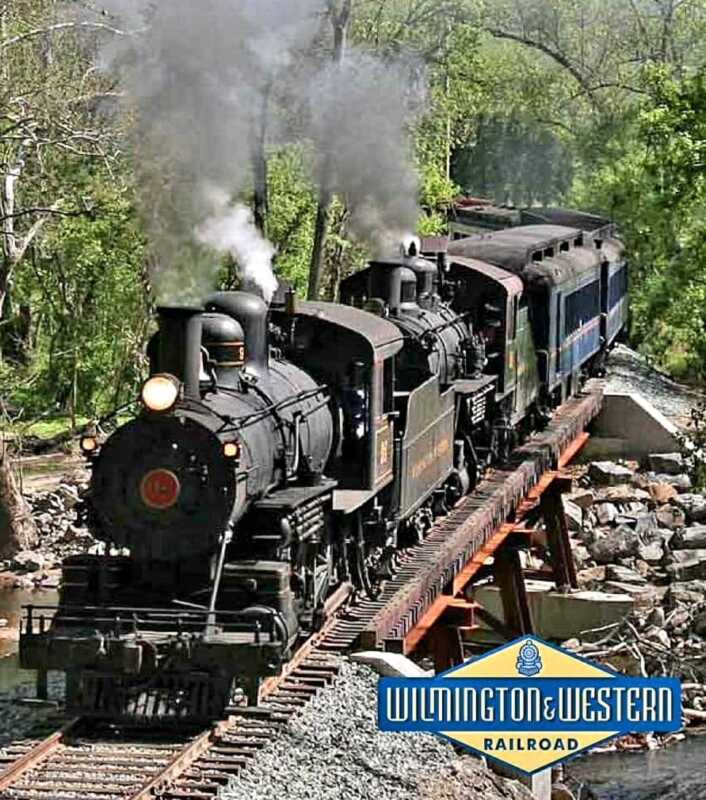
After leaving the picnic grove and crossing the Red Clay Creek again, the train rolls through the Mt. Cuba Rock Cut, which is smaller than the cut at Wooddale. All of the rock had to be removed by hand to make way for the railroad using picks, axes, shovels and black powder. It cost so much money to blast through the rock to build the original Wilmington & Western that the original owners were forced to declare bankruptcy after just three years in operation.
ASHLAND
Upon entering the small town of Ashland, the train crosses Bridge 11A, the Ashland truss bridge, which is unique in that it can be seen from the coach windows, and it is the only iron bridge on the railroad (all other bridges are built with steel or wood).
Ashland is the home of the Ashland Nature Center, and the train skirts the northern end of the property. The nature center is nestled among 600 acres of forests, fields, meadows and streams. The Easter Bunny Express and the Santa Claus Express both pause here, before returning to Greenbank.
The train crosses Sharpless Road, and passes the Sharpless Dam, whose waterfall is another scenic highlight in this area. We then run alongside Creek Road (Delaware Route 82) for a quarter-mile. Drivers and cyclists often slow down along this stretch of the line to wave to passengers and take pictures of the passing train.
YORKLYN
There were two major industries in Yorklyn at the turn of the last century – snuff milling and paper milling. In fact, the world’s largest snuff mill was located here in Yorklyn, and was served by the Wilmington & Western. Snuff is a form of smokeless tobacco which was popular in Europe during the 18th and 19th centuries. Some of the old mill buildings still stand in the area.
Two important pieces of Yorklyn (and railroad) history have been preserved and are on display at Greenbank Station. First, the old Yorklyn station now serves as the Red Clay Valley Visitor Center & Museum, and is typical of the other stations that were located along the line. Second, a cart used for hauling snuff around the Yorklyn snuff mills is also on display at Greenbank. The modern Wilmington & Western was born here in Yorklyn. We took delivery of the first steam locomotive and thefleet of passenger coaches here, and that locomotive was restored to operation in one of the old mill buildings.
Since leaving Greenbank, the tracks have been closely following the Red Clay Creek, but in Yorklyn, the tracks and the creek diverge. the tracks curve sharply to the west and head up the 1.75% grade into Hockessin, which is known on the railroad as Hockessin Hill.
At the bottom of the hill, the train rolls through the now-abandoned National Vulcanized Fibre Company (NVF) property. NVF once made a number of fiber-based products, including electrical insulators and wood veneers. The property was sold in November 2009 to the State of Delaware for conversion into 87-acres of mixed-use retail, restaurants and housing, as well as walking trails and parkland. Now known as “Yorklyn Village,” you can follow the progress of the redevelopment at Yorklyn.org.
HOCKESSIN
The first European settlers arrived in what is now Hockessin in the late 1680s, and William Penn later gave much of this land to his daughter as part of a 15,000-acre estate.
In 1820, kaolin clay was discovered around Hockessin. Kaolin is an extremely high-grade of white clay which was highly valued for its use in fine china. As the train enters Hockessin, we pass one of the abandoned open pit mines from which the kaolin was dug, and the railroad was the primary vehicle by which the kaolin traveled to port. The coming of the railroad transformed Hockessin from a small farming community into the residential and agricultural center it is today.
Although the original Wilmington & Western went as far as Landenberg, PA, the tracks were cut back to Hockessin in the 1950s due to a decline in freight traffic west of here.
Upon arrival in Hockessin, passengers can de-train and browse the local shops and eateries in the downtown area during the 30-minute layover. Among the excursions that travel to Hockessin are the Fireworks Express, Hockessin Flyer and the 2½-hour Autumn Leaf Special.
One weekend each year, you can board a train in Hockessin and travel east through the valley to Mt. Cuba. The Wilmington & Western sponsors an art festival each February at Hockessin Memorial Hall as a fundraiser for the railroad, and 30% of all art sales goes directly to support the operations and restoration projects.
Wilmington & Western Railroad website info
B&O Train At Landenberg, PA , circa 1895 Photo: HRCV Archives ,Wilmington & Western Railroad website
SCHEDULE & TICKETS
Passenger cars
- Four DL&W Boonton passenger cars operate along the railroad. Combine #410, Coach #571, Coach #581, and Coach #603 were built in 1914-15 by the Pullman Company for the Delaware, Lackawanna & Western Railroad for commuter service as part of an order for 77 cars. The cars were in commuter service until the late 1950s, when newer passenger cars were pressed into service. The four Boonton passenger cars were purchased by HRCV in the early 1960s for passenger service. The passenger cars have been in service since May 1966.
- Open-Air Coach #442 Kiamensi Springs was originally a locomotive-hauled PRR MP54 passenger car built by the Pennsylvania Railroad’s Altoona Works in 1912. The car was converted to a MP54E6 EMU between 1950 and 1951 by adding electric traction motors. This coach car was used in commuter service for the Pennsylvania Railroad until being retired by 1978. Coach #442 arrived at the Wilmington and Western Railroad in 1988 and was converted into an open-air car in the late 1990s, entering service on May 23, 1999.
- Parlor Car #6795 was built in 1930 by the Pullman Company for the Delaware, Lackawanna & Western Railroad as an EMU commuter coach numbered #2548. When the Delaware, Lackawannana & Western Railroad merged with the Erie Railroad to become the Erie Lackawanna Railway in 1960, #2548 was renumbered to #3548. The car was eventually purchased by Philadelphia radio personality Tom Moran, who placed it into storage in Woodstown, New Jersey. Moran painted the car into a Pennsylvania-Reading Seashore Lines scheme and renumbered it to #6795. The Wilmington and Western Railroad purchased #6795 on January 14, 1991 and kept the car in storage until early 2006, when it was restored and converted into a parlor car.
Cabooses
- Caboose #C149 was built by the Erie Railroad at its Dunmore Shops in July 1941. The caboose saw service on the Erie Railroad and later the Erie Lackawanna Railway. In 1976, the Erie Lackawanna Railway became part of Conrail and #C149 was renumbered to #46195. The caboose eventually came to the Wilmington and Western Railroad as #C149 and was used on work trains. The caboose was refurbished in 2000 to be used for passengers and for birthday parties, entering revenue service on April 13, 2001. In 2016, the caboose was taken out of service for a major interior restoration.
- Caboose #C2013 was built by the B&O at its Washington, Indiana shops in 1926 as a class I-5 caboose. It became a class I-5D when steel frame trucks were added. After coming to the Wilmington and Western Railroad, the caboose was restored to its original window placement and a back-up horn and lights were added. In summer 2005, the caboose had new roller-bearing trucks added and the wood siding replaced. In 2006, #C2013 underwent a restoration that reconstructed the interior and repainted the caboose into an authentic B&O scheme.
- Caboose #C2042 was built by the B&O at its Washington, Indiana shops in August 1926 as a class I-5 caboose. It became a class I-5D when cast frame trucks were added. After coming to the Wilmington and Western Railroad, a back-up horn and lights were added. The caboose underwent an exterior restoration in 2013 that gave it a fresh coat of point, and underwent an interior restoration in 2016.
Related Posts
- Oregon Scenic Railroad
- Jacobite Train
- Amazing Tourist Trains
- Virginia & Truckee Railroad
- Durango & Silverton Scenic
- Georgetown Loop Railroad




